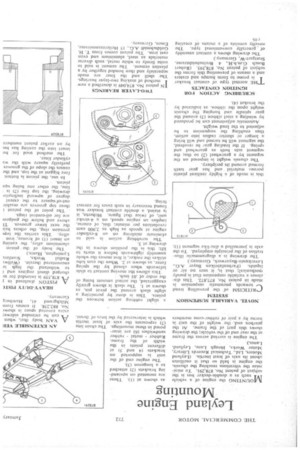Leyland Engine Mounting
Page 84

If you've noticed an error in this article please click here to report it so we can fix it.
lk/IOUNTING the engine of a vehicle IV' such as a double-decker bus is the subject of patent No. 878,291: To minimize the vibrations reaching the chassis, the engine is held so that it oscillates about its axis of least inertia. (Leyland Motors, Ltd., Technical Records Library, Motor Works, Hough Lane, Leyland. Lancs.) The engine is carried across the frame at the rear end of the vehicle; the drawing shows this part of the frame. At the gearbox end,-the weight of the unit is borne by a pair of rubber-cone members as shown at (I). These are mounted on upstanding brackets (2) attached to a longeron (3).
The engine end of the unit is supported on brackets (4 and 5) at different points in the width of the frame. Rubber metal rubber sandwiches (6) arc interposed in these mountings. The chain line (7) represents the axis of least inertia which is intersected by the lines of thrust.




























































































































